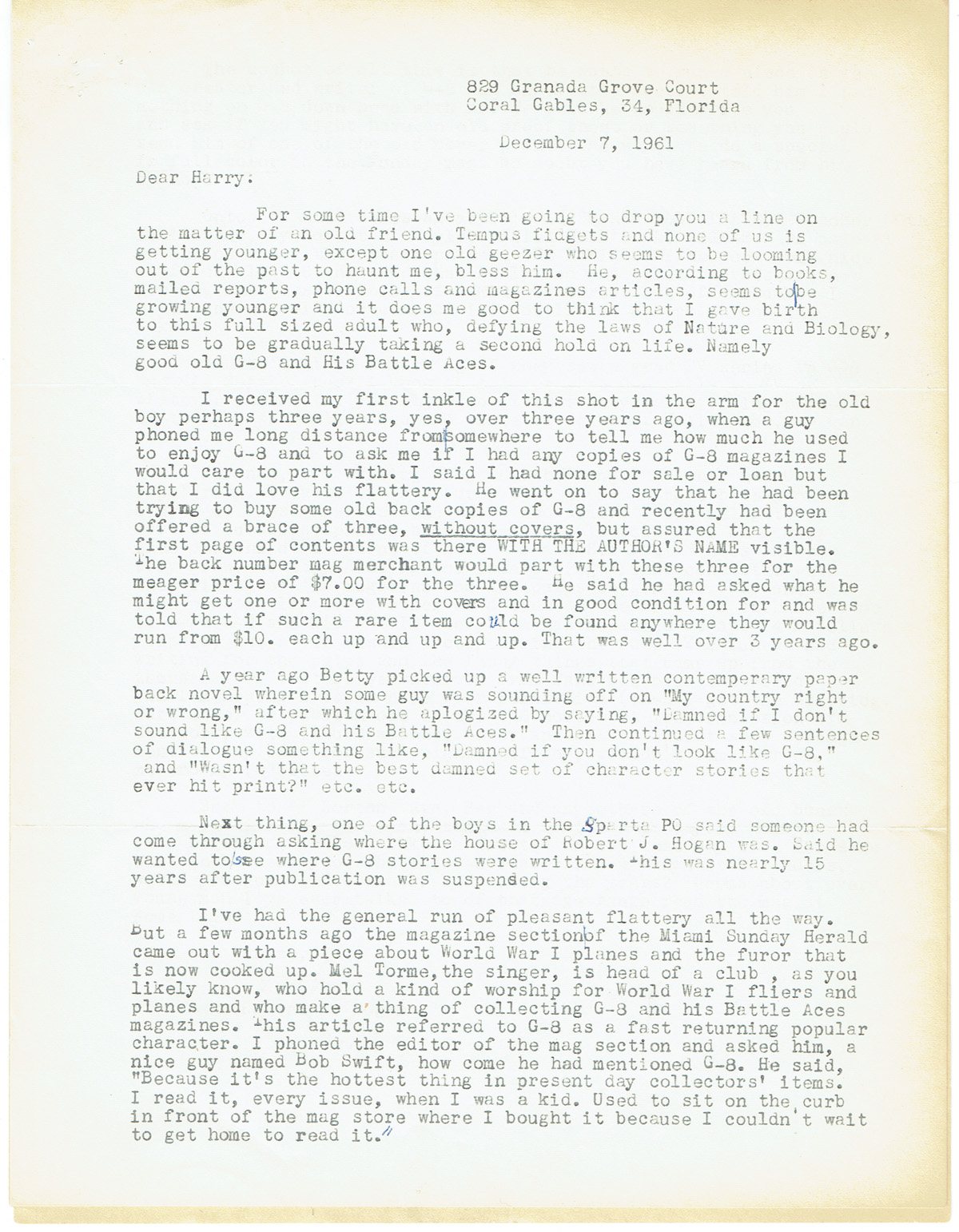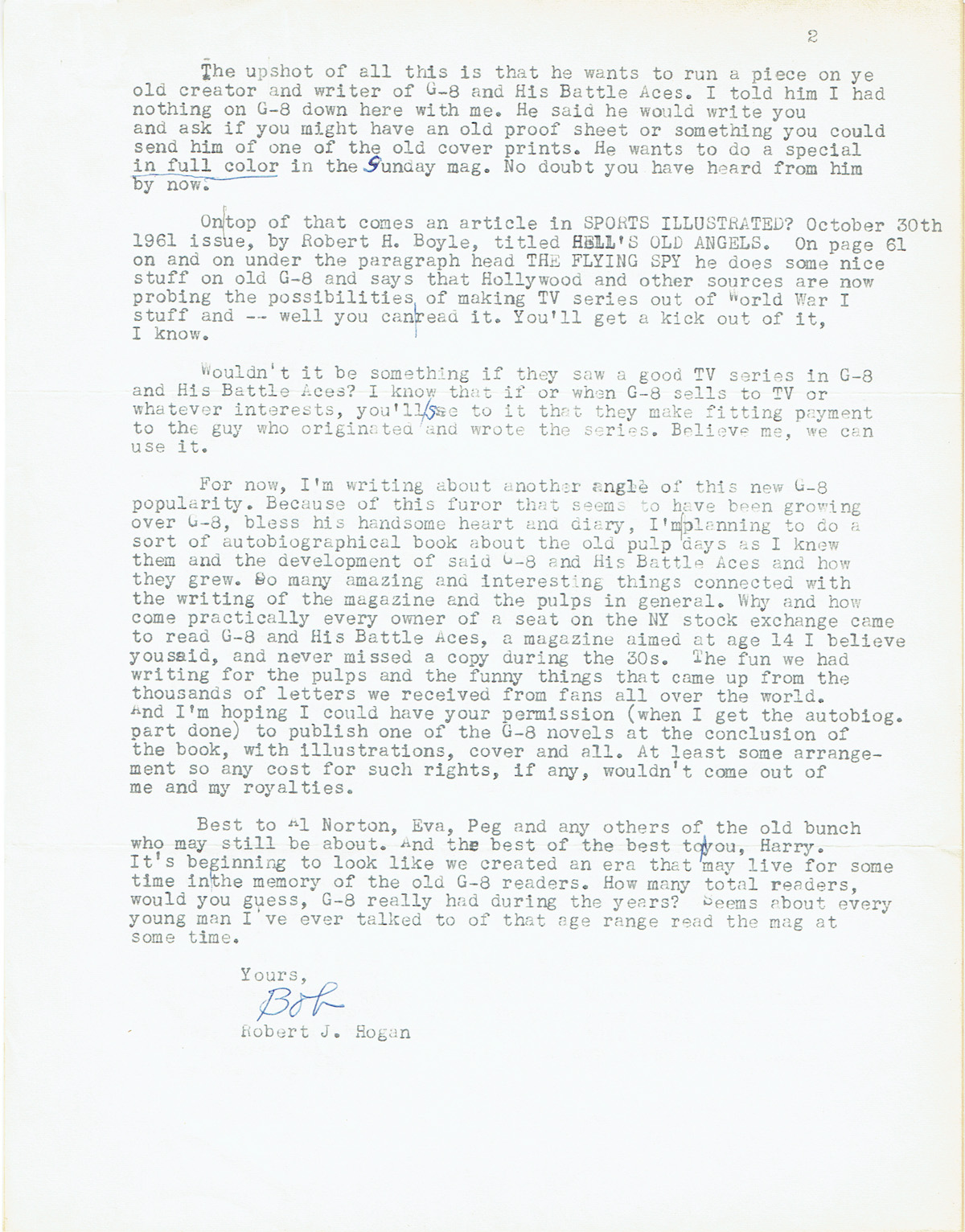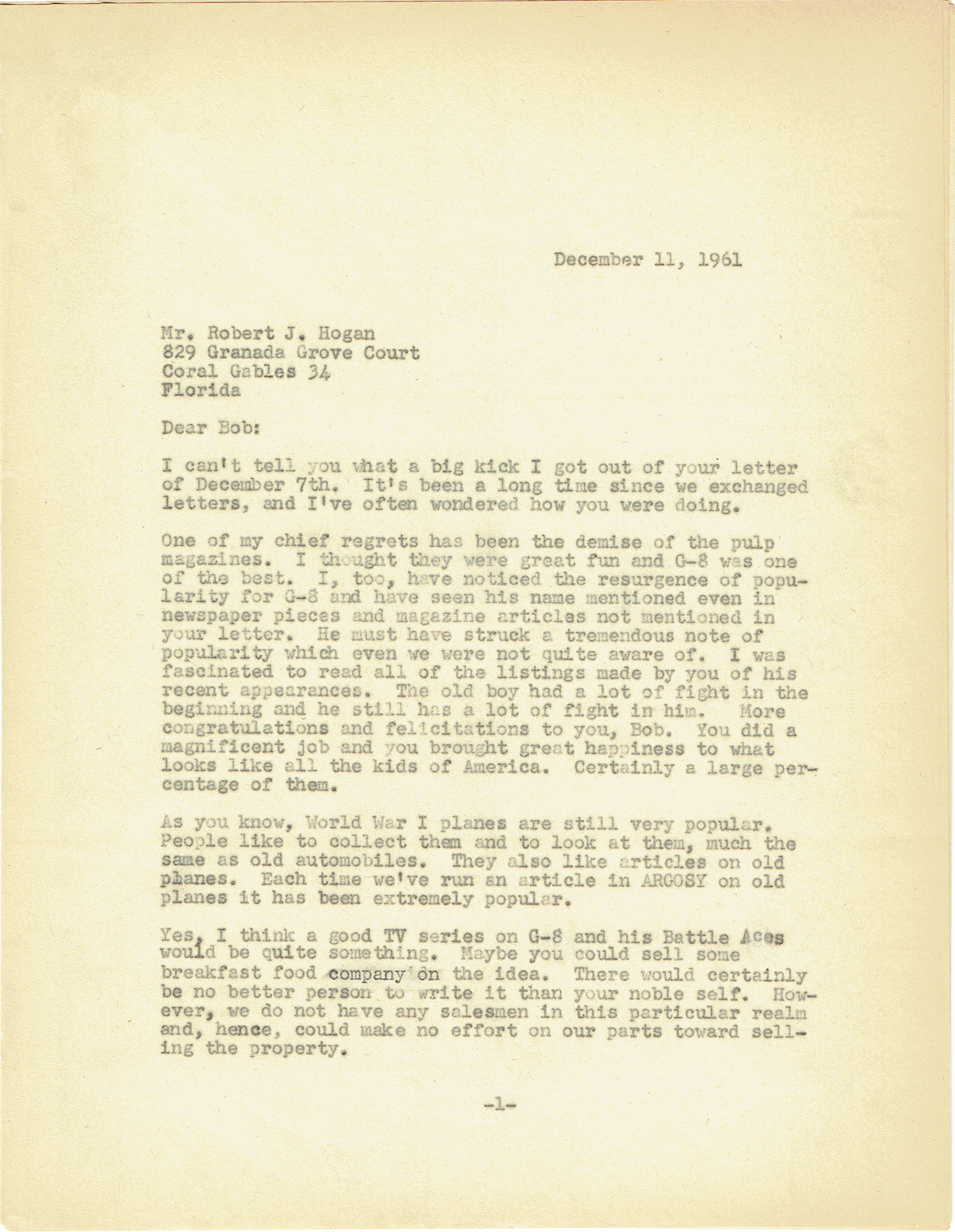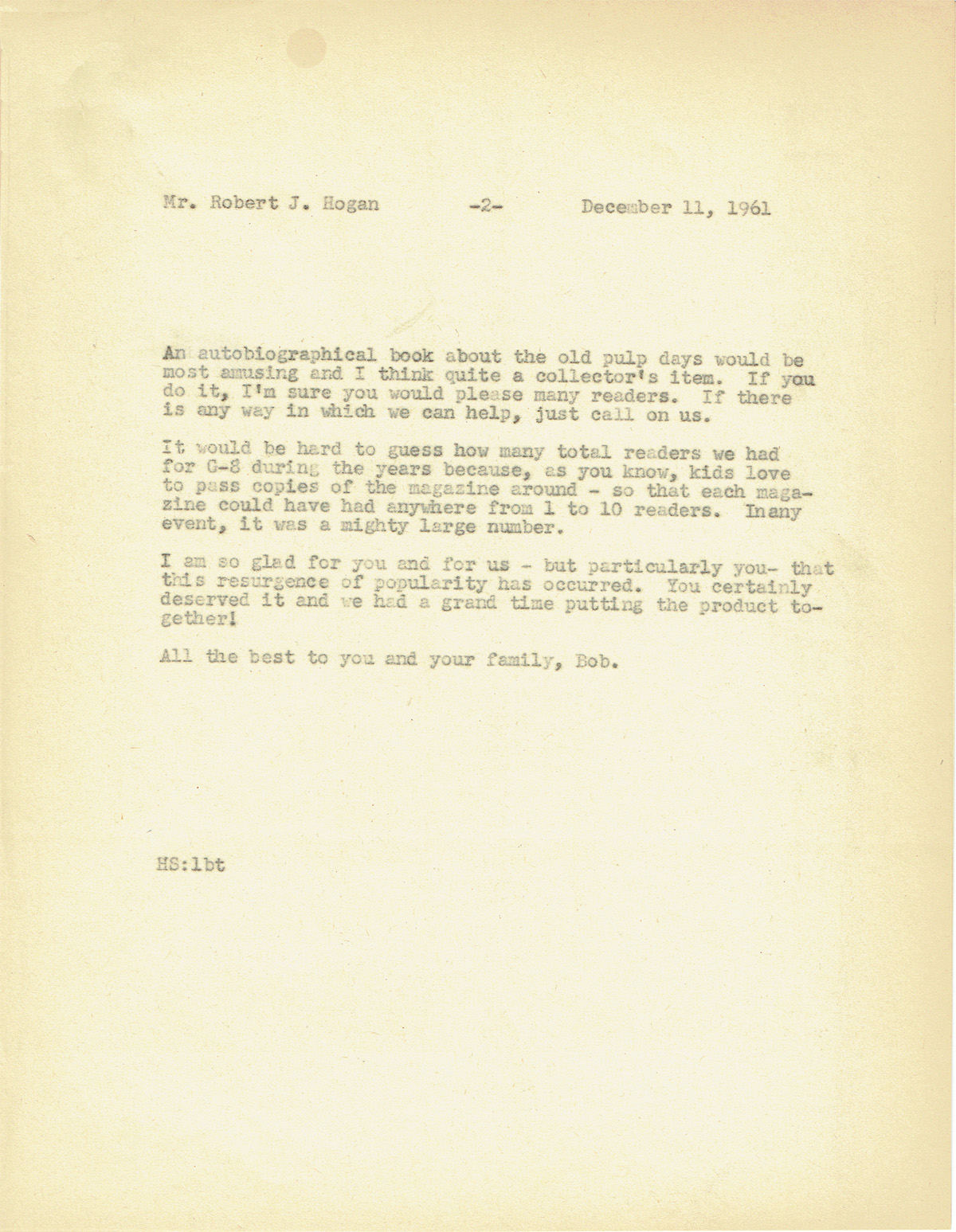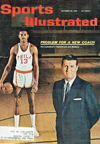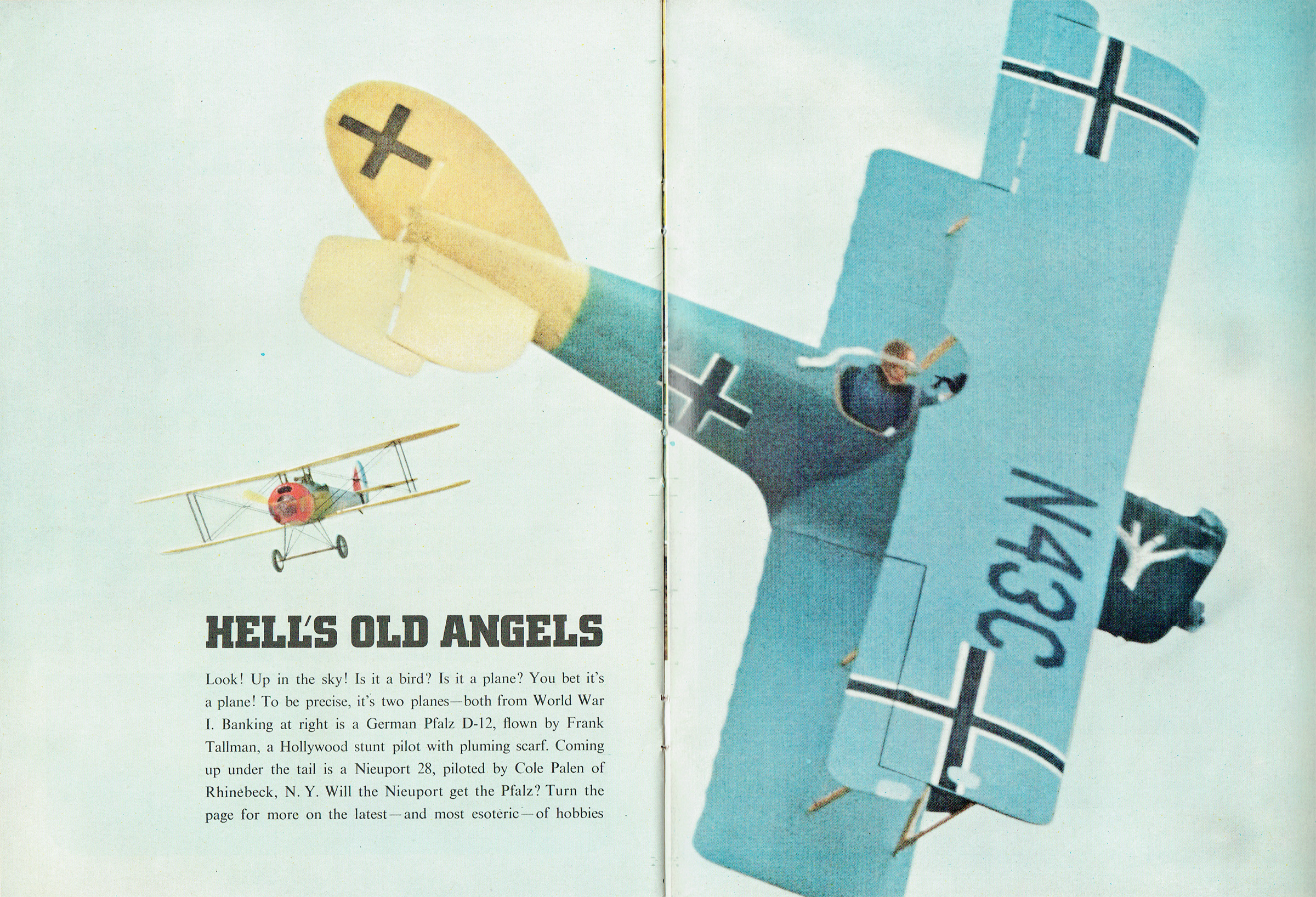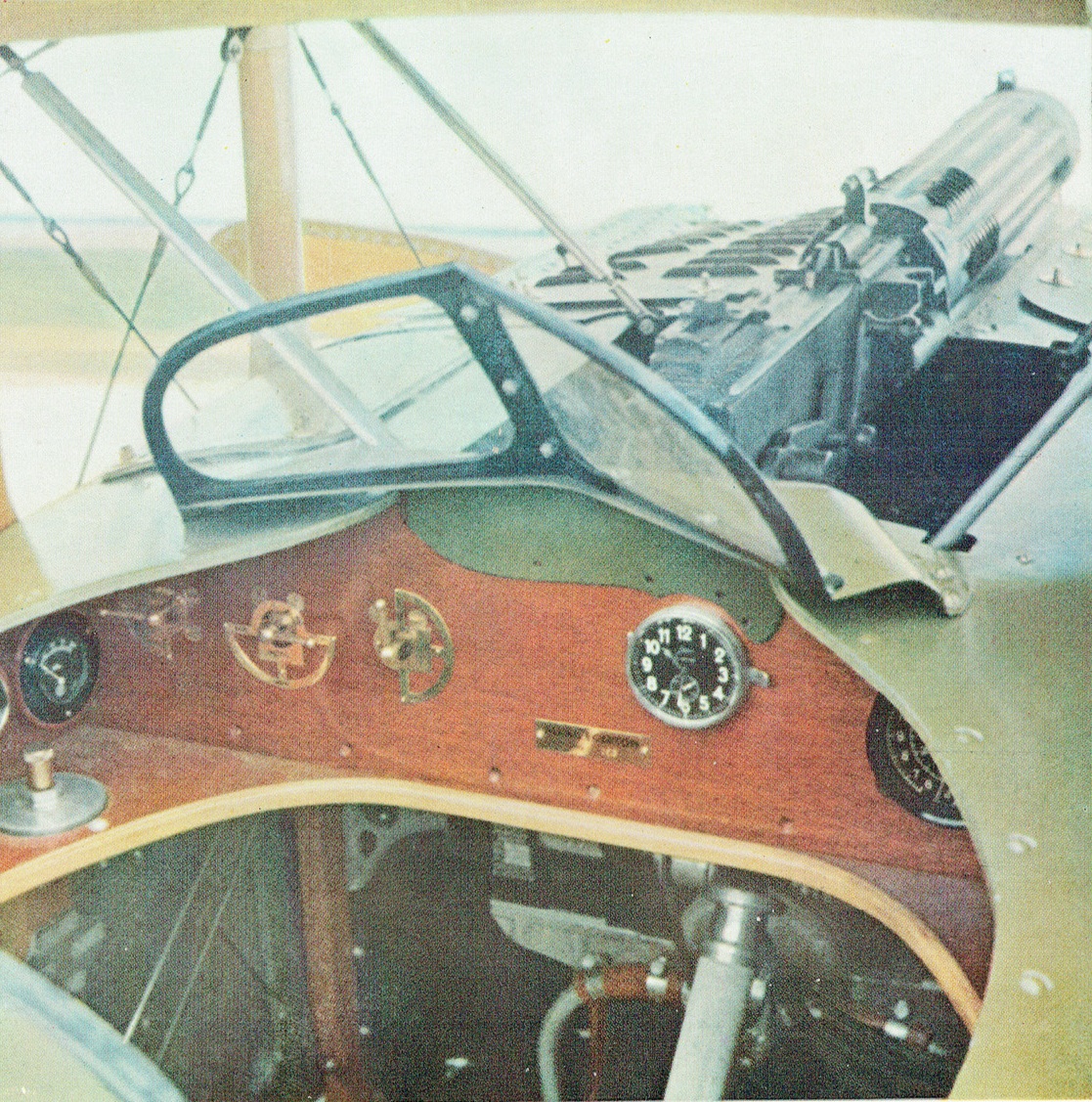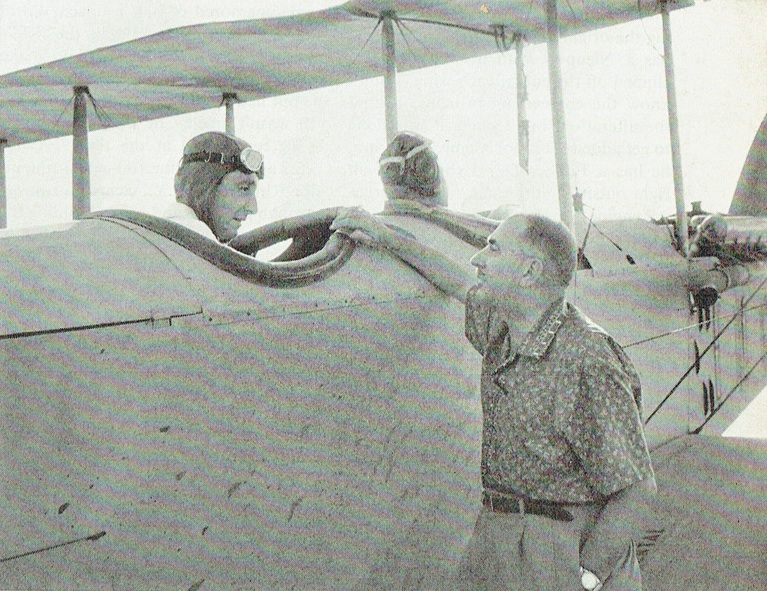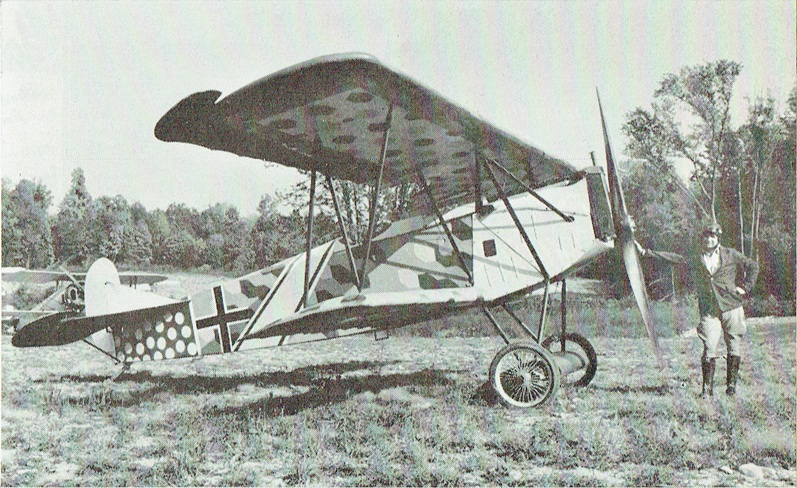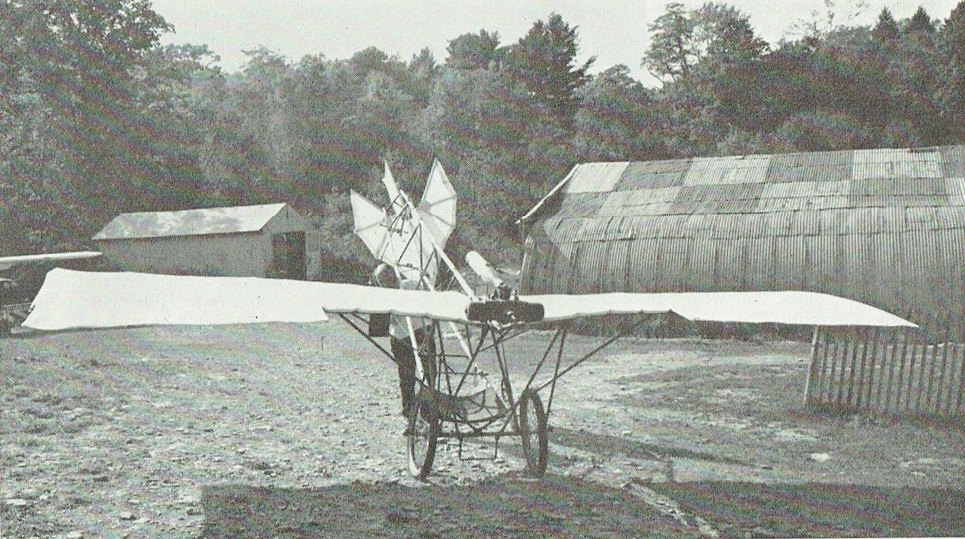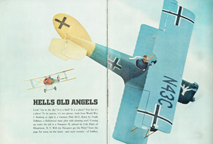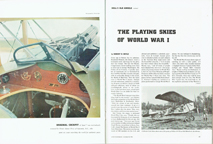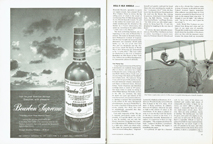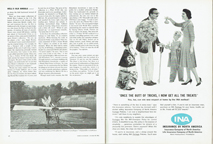The Hogan/Steeger Letters
A few years ago, writer and frequent Age of Aces contributer Don Hutchison came up to our table at PulpFest and handed us a manilla envelope, entrusting us with its contents. When we opened the envelope, amung other things, there were letters from Robert Hogan to Harry Steeger and back again.
On December 7th, 1961, prompted by the growing nostagia over World War I and G-8 and his Battle Aces in particular, Robert J. Hogan took the time to write to his old publisher and friend Harry Steeger. . .
December 7, 1961
Dear Harry:
For some time I’ve been going to drop you a line on the matter of an old friend. Tempus fidgets and none of us is getting younger, except one old geezer who seems to be looming out of the past to haunt me, bless him. He, according to books, mailed reports, phone calls and magazines articles, seems to be growing younger and it does me good to think that I gave birth to this full sized adult who, defying the laws of Nature and Biology, seems to be gradually taking a second hold on life. Namely good old G-8 and His Battle Aces.
I received my first inkle of this shot in the arm for the old boy perhaps three years, yes? over three years ago, when a guy phoned me long distance from somewhere to tell me how much he used to enjoy G-8 and to ask me if I had any copies of G-8 magazines I would care to part with. I said I had none for sale or loan but that I did love his flattery. He went on to say that he had been trying to buy some old back copies of G-8 and recently had been offered a brace of three, without covers, but assured that the first page of contents was there WITH THE AUTHOR’S NAME visible. The back number mag merchant would part with these three for the meager price of $7.00 for the three. He said he had asked what he might get one or more with covers and in good condition for and was told that if such a rare item could be found anywhere they would run from $10. each up and up and up. That was well over 3 years ago.
A year ago Betty picked up a well written contemperary paper back novel wherein some guy was sounding off on “My country right or wrong,” after which he apologized by saying, “Damned if I don’t sound like G-8 and his Battle Aces.” Then continued a few sentences of dialogue something like, “Damned if you don’t look like G-8,” and “Wasn’t that the best damned set of character stories that ever hit print?” etc. etc.
Next thing, one of the boys in the Sparta PO said someone had come through asking where the house of Robert J. Hogan was. Said he wanted to see where G-8 stories were written. This was nearly 15 years after publication was suspended.
I’ve had the general run of pleasant flattery all the way. But a few months ago the magazine section of the Miami Sunday Herald came out with a piece about World War I planes and the furor that is now cooked up. Mel Torme, the singer, is head of a club, as you likely know, who hold a kind of worship for World War I fliers and planes and who make a thing of collecting G-8 and his Battle Aces magazines. This article referred to G-8 as a fast returning popular character. I phoned the editor of the mag section and asked him, a nice guy named Bob Swift, how come he had mentioned G-8. He said, “Because it’s the hottest thing in present day collectors’ items. I read it, every issue, when I was a kid. Used to sit on the curb in front of the mag store where I bought it because I couldn’t wait to get home to read it.”
The upshot of all this is that he wants to run a piece on ye old creator and writer of G-8 and His Battle Aces. I told him I had nothing on G-8 down here with me. He said he would write you and ask if you might have an old proof sheet or something you could send him of one of the old cover prints. He wants to do a special in full color in the Sunday mag. No doubt you have heard from him by now.
On top of that comes an article in SPORTS ILLUSTRATED? October 30th 1961 issue, by Robert H. Boyle, titled HELL’S OLD ANGELS. On page 61 on and on under the paragraph head THE FLYING SPY he does some nice stuff on old G-8 and says that Hollywood and other sources are now probing the possibilities of making TV series out of World War I stuff and—well you can read it. You’ll get a kick out of it, I know.
Wouldn’t it be something if they saw a good TV series in G-8 and His Battle Aces? I know that if or when G-8 sells to TV or whatever interests, you’ll see to it that they make fitting payment to the guy who originated and wrote the series. Believe me, we can use it.
For now, I’m writing about another angle of this new G-8 popularity. Because of this furor that seems to have been growing over G-8, bless his handsome heart and diary, I’m planning to do a sort of autobiographical book about the old pulp days as I knew them and the development of said G-8 and His Battle Aces and how they grew. So many amazing and Interesting things connected with the writing of the magazine and the pulps in general. Why and how come practically every owner of a seat on the NY stock exchange came to read G-8 and His Battle Aces, a magazine aimed at age 14 I believe you said, and never missed a copy during the 30s. The fun we had writing for the pulps and the funny things that came up from the thousands of letters we received from fans all over the world. And I’m hoping I could have your permission (when I get the autobiog. part done) to publish one of the G-8 novels at the conclusion of the book, with illustrations, cover and all. At least some arrangement so any cost for such rights, if any, wouldn’t come out of me and my royalties.
Best to Al Norton, Eva, Peg and any others of the old bunch who may still be about. And the best of the best to you, Harry. It’s beginning to look like we created an era that may live for some time in the memory of the old G-8 readers. How many total readers, would you guess, G-8 really had during the years? Seems about every young man I’ve ever talked to of that age range read the mag at some time.
Yours,
Robert J. Hogan
— ✪ ✪ ✪ —
December 11, 1961
Dear Bob:
I can’t tell you what a big kick I got out of your letter of December 7th. It’s been a long time since we exchanged letters, and I’ve often wondered how you were doing.
One of my chief regrets has been the demise of the pulp magazines. I thought they were great fun and G-8 was one of the best. I, too, have noticed the resurgence of popularity for G-8 and have seen his name mentioned even in newspaper pieces and magazine articles not mentioned in your letter. He must have struck a tremendous note of popularity which even we were not quite aware of. I was fascinated to read all of the listings made by you of his recent appearances. The old boy had a lot of fight in the beginning and he still has a lot of fight in him. More congratulations and felicitations to you, Bob. You did a magnificent job and you brought great happiness to what looks like all the kids of America. Certainly a large percentage of them.
As you know, World War I planes are still very popular. People like to collect them and to look at them, much the same as old automobiles. They also like articles on old planes. Each time we’ve run an article in ARG0SY on old planes it has been extremely popular.
Yes, I think a good TV series on G-8 and his Battle Aces would be quite some thing. Maybe you could sell some breakfast food company on the idea. There would certainly be no better person to write it than your noble self. However, we do not have any salesmen in this particular realm and, hence, could make no effort on our parts toward selling the property.
An autobiographical book about the old pulp days would be most amuslng and I think quite a collector’s item. If you do it, I’m sure you would please many readers. If there is any way in which we can help, just call on us.
It would be hard to guess how many total readers we had for G-8 during the years because, as you know, kids love to pass copies of the magazine around—so that each magazine could have had anywhere from 1 to 10 readers. In any event, it was a mighty large number.
I am so glad for you and for us—but particularly you—that this resurgence of popularity has occurred. You certainly deserved it and we had a grand time putting the product together!
All the best to you and your family, Bob.





